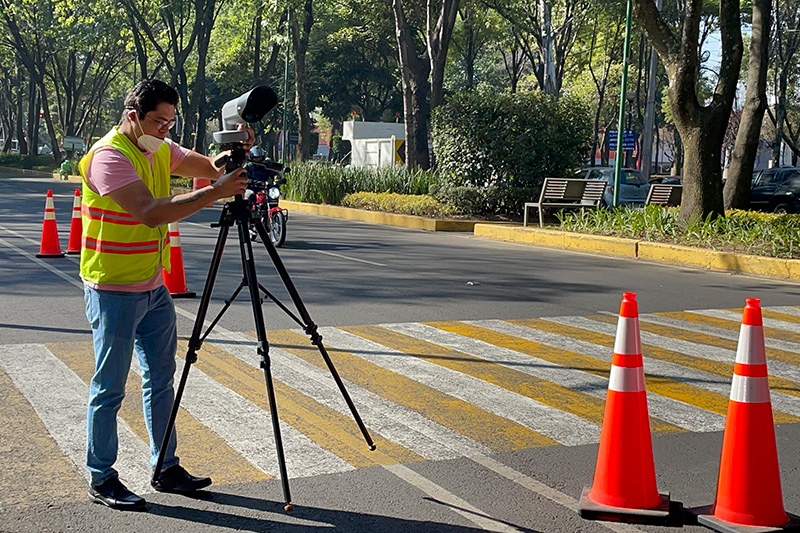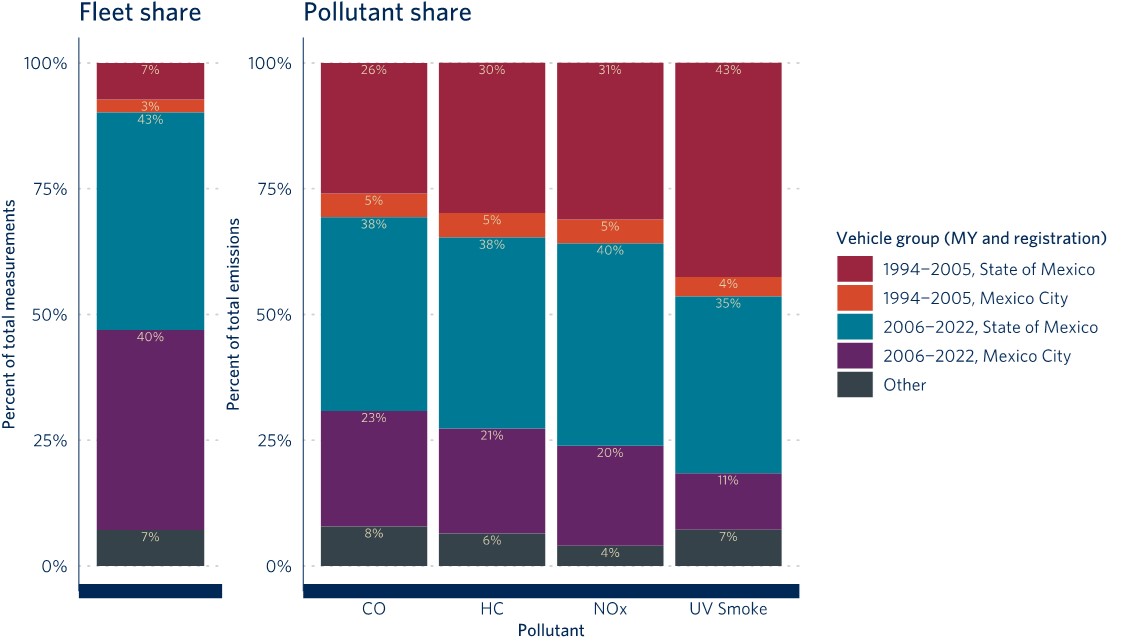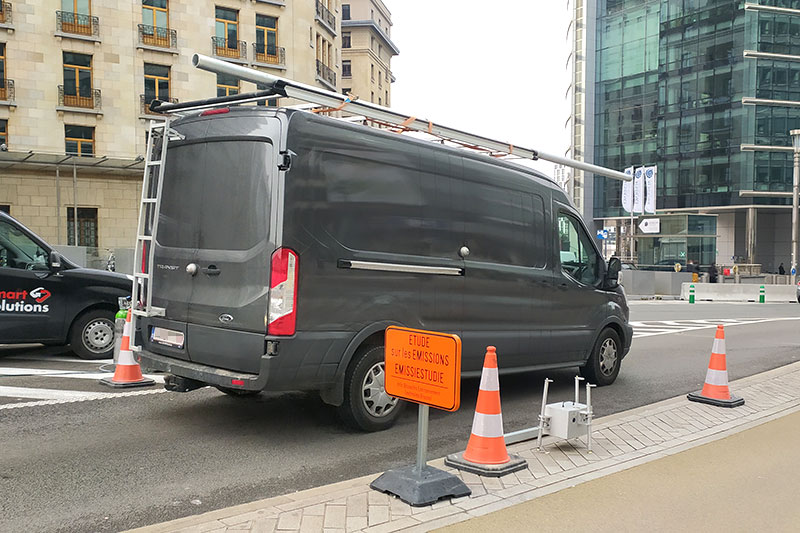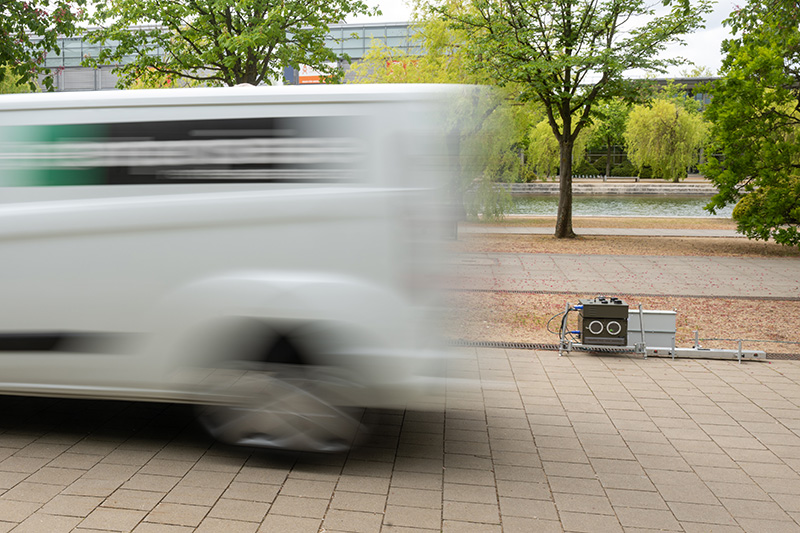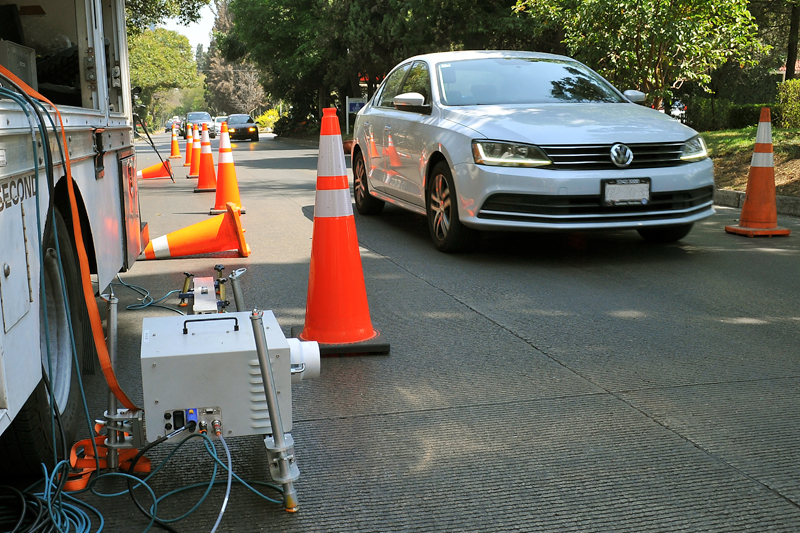New study identifies highest-emitting vehicles in Mexico City
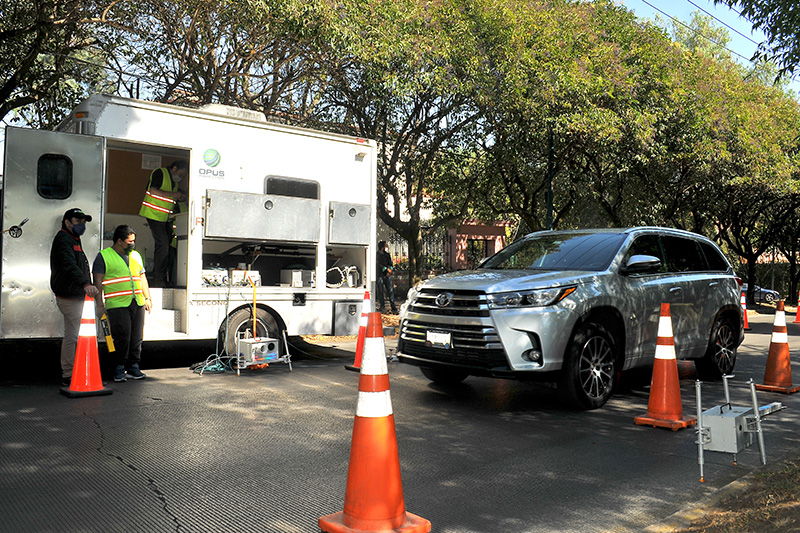
The results of TRUE’s first Latin America remote sensing campaign quantify the high emissions from older vehicles and reveal the impacts of lagging LDV national emission standards.
The latest report from the TRUE Initiative analyzes real-world vehicle emissions data collected from passenger vehicles (PVs), taxis, and light-duty trucks in Mexico City and the surrounding region to provide a comprehensive picture of vehicle emissions from the region’s fleet.
Light-duty vehicles (LDVs), such as passenger vehicles (PVs) and taxis, are a key source of transport emissions in Mexico City, contributing to high levels of ozone (O3) and fine particulate matter, which lead to adverse health impacts among residents. Recent air quality emergencies highlight the need for ambitious emission reduction policies.
To address these challenges in the Greater Mexico City area, the governments of Mexico City and the neighboring State of Mexico restrict some older, high-emitting vehicles from driving on certain days within the city limits, but national policies regulating light-duty vehicle (LDV) emissions in Mexico continue to lag those of other countries. Notably, the national LDV emission standard was last updated in 2005.
Despite this, Mexico City has set goals for future emissions reduction through strategies like implementing a low-emission zone and accelerating the transition to battery-electric vehicles. This TRUE campaign sough to support the development of these strategies by analyzing real-world data and developing policy recommendations that would target the highest emitting vehicles.
“CAMe expresses sincere gratitude to the TRUE Initiative and ICCT for the preparation of this valuable study,” says Dr. Victor Hugo Páramo, executive coordinator of CAMe. “This research helps to contrast the measurements from vehicle verification centers and will contribute to the evaluation of the performance, and updating of, environmental policies in our region, such as vehicle verification programs.”
A total of 45,000 measurements from 21 total locations were collected between February and April 2022, with 98.6% registering as gasoline vehicles. Key findings include:
- Older cars account for a small portion of the fleet but contribute a large share of emissions. Specifically, model year (MY) 1994–2005 PVs registered in the State of Mexico accounted for only 7% of the sampled fleet but made up 25%–42% of total emissions across pollutants.
- Taxis showed approximately 2.2-3.1 times higher emissions across all pollutants when compared to PVs, with the most popular taxi model, the Nissan Tsuru showing 10 times higher NOx emissions than other PVs for MY 2014.
- Certain popular vehicle models certified to the most recent national emission standard in Mexico showed emissions several times above the fleet average, indicating that current emission standards are not sufficient to ensure low real-world emissions.
In addition, researchers utilized existing data from the TRUE database to compare hydrocarbon (HC) emissions across North America. The analysis showed that vehicles in Mexico City emit at least 2 times higher HC levels compared to vehicles in the United States and Canada certified to a similar standard, which are around 20 years old. This consequently increases the formation of ozone (O3), which is known to lead to adverse health impacts among residents.
To support local policymakers in reducing regional pollution, this report recommends harmonizing and strengthening inspection and maintenance programs to reduce emissions from the highest-emitting vehicles. Additionally, the report recommends expanding incentives to replace highest-emitting taxis with lower- and zero-emitting models. Adopting the proposed low-emission zone in the Mexico City downtown area by 2024 could also accelerate emissions reduction from older vehicles.
"The results of this study allow us to identify the emissions rate that light duty vehicles circulating in Mexico City currently present,” says Sergio Zirath Hernández Villaseñor, general director of air quality at SEDEMA. “We will request that appropriate agencies analyze each of the actions proposed, with the objective of defining their feasibility and convenience, and where suitable, carry out the necessary work for their implementation.”
“Transport and air quality were key topics of discussion in the most recent elections here in Mexico City,” says Leticia Pineda, Mexico and Canada regional lead at the International Council on Clean Transportation. “The insights gathered from this campaign provide specific and strategic recommendations to city and regional officials as they continue their efforts to reduce pollution and consider new policies and frameworks to clean transportation.”
Finally, ensuring that new vehicles have low real-world emissions is another priority. In lieu of national-level regulatory updates, coordination across states to implement more stringent regulations can greatly reduce emissions and associated air pollution and health impacts.
